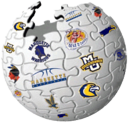Now that we know how to calculate RPI, the next question is what difference levels of opponents makes. First of all, we're going to look at what are considered Marquette's "cupcake games". To qualify as a cupcake, the game is generally going to be a one-time meeting played at Marquette, with Marquette paying a set fee to the opponent to travel to Milwaukee for the game.
For sake of comparison, the games I'm going to use as examples of cupcakes for the 2011-12 season are Mount St. Mary's, Norfolk State, Jacksonville, and Northern Colorado. While NSU was technically part of the Paradise Jam, they were the one of only four non-series home games we played. The comparison teams from the past I will use are the four lowest RPI home wins from 2010-11, Centenary, Prairie View A&M, Longwood, and South Dakota. If Marquette had played teams with identical profiles to the 2010-11 teams in 2011-12, here is how it would have impacted their RPI:
First Factor: Marquette won all eight games at home, so there is no difference to the first 25%. Marquette's record still would have counted as 21.4 - 5.4, good for a 0.7985 winning percentage.
Second Factor: The combined record of the 2011-12 teams was 50-66 for Marquette's RPI purposes. The combined record of the 2010-11 teams was 41-81. This changes Marquette's opponents' record to 583-409, good for a 0.5877 winning percentage.
Third Factor: The combined opponents' opponents' winning percentage for the 2011-12 teams was 0.4943, which led to the 0.5327 score Marquette received in the first article. The combined opponents' opponents' winning percentage for the 2010-11 teams was 0.4242. When replacing the value, it gives Marquette a new score of 0.5239.
To calculate Marquette's new RPI, we simply add the three factors together using the second factor twice (50% weight) then divide the number by 4. This gives us a final RPI of 0.6244, which would have dropped Marquette from 9th to 11th in the RPI rankings.
I also calculated Marquette's RPI for the 2010-11 season when Marquette finished on the bubble. I was interested in this because the difference in RPI scores for teams lower down the food chain tends to be narrower, meaning that the change of a handful of opponents could make a significant difference. The first factor was 0.5555, the second was 0.5890, and the third was 0.5397, resulting in an RPI of 0.5683. Adjusting the cupcakes to 2011-12 levels, the second factor goes to 0.6012 and the third goes to 0.5407. This would have given Marquette a 0.5647 RPI score. That difference would have taken Marquette from the 64th best RPI in the country to the 54th best, which likely would have taken them off the bubble.
When you have a successful regular season, like Marquette did in 2011-12, the difference of a few cupcakes may only make the difference of 2-3 positions in the RPI, but that could also be the difference between a 4-seed and a 3-seed, or a 3-seed and a 2-seed, which increases your likelihood of an easier path to the Final Four and games closer to home. When a team has a regular season that leaves them on the bubble, like Marquette did in 2010-11, the difference of a few cupcakes can make the difference of 8-12 positions in the RPI, which in the 50s-60s has a very good chance of being the difference between being in the tournament and out of it.
Saturday, June 02, 2012
RPI: Why Cupcakes Matter, Part II
Written by
Alan Bykowski
at
1:29 PM
![]()
Subscribe to:
Post Comments (Atom)

No comments:
Post a Comment